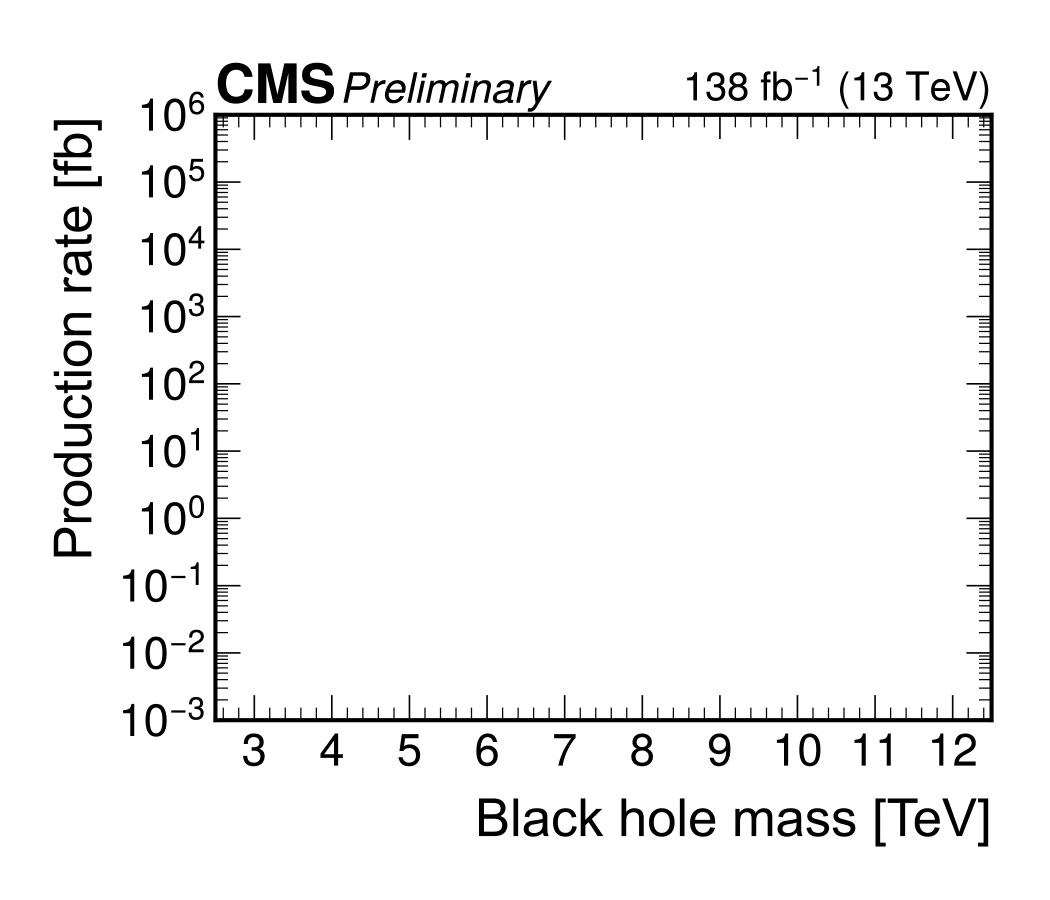
The CMS experiment utilises cutting-edge machine learning techniques to search for microscopic, quantum black holes and other exotic objects that evaporate in an instant.
Black holes are amongst the most fascinating objects in the universe. They form when matter is compressed into an extraordinarily small volume, creating a region where gravity becomes so intense that nothing – not even light – can escape. The black holes astronomers observe today are classical ones, born from collapsing stars or residing in the centres of galaxies. Yet some theories, which propose that our universe might contain more than the three familiar dimensions of space, open the possibility of an entirely different kind of black holes – microscopic, quantum ones. These tiny black holes would emit all their energy – or “evaporate” – almost instantly through Hawking radiation, releasing a distinctive burst of particles that detectors like CMS at CERN could observe.
Motivated by this possibility, the CMS experiment has carried out one of the most comprehensive searches yet for microscopic black holes, as well as for other exotic phenomena. The study uses the data collected from 2016 to 2018, when the LHC smashed protons together at the centre-of-mass energy of 13 TeV. The dataset, corresponding to an integrated luminosity of 138 fb–1, contains more than 10 quadrillion (1016) collision events.
When analysing such datasets with a huge number of collision events, we occasionally see things that may fit a new theory. The event display shown below is one such example – it features several highly-energetic sprays of particles (jets), exhibiting a signature consistent with the production of a microscopic black hole. It could also be something more mundane – such as a “regular” collision that, by chance, produces an unusual pattern resembling new physics. So we need to look at our data statistically – to see if we have more of this sort of event than expected by “background” processes alone.
Above: An event recorded by the CMS detector showing a signature consistent with the production of a microscopic black hole. The black hole decays instantly, producing sprays of particles that form seven jets, which are represented by the orange cones. This event has the highest total transverse momentum (6.9 TeV) seen in this search. The display is interactive and can also be viewed on a full, interactive page here.
To perform the search, two complementary strategies are used. The first is a model-independent method that relies on the observation that the distribution of the total transverse momentum tends to maintain its shape for known background processes. “The consistent shape of the total transverse momentum distribution for backgrounds, as well as how uniformly the final state particles are spread in space, allows us to effectively distinguish between potential signals and background,” explains Celia Lo, a PhD student at the University of California, Los Angeles, and a lead contributor to the study.
The second, model-dependent approach focuses specifically on black holes and another exotic phenomenon known as sphalerons – rare, high-energy transitions that could produce matter without creating any anti-matter, which never happens in the known natural processes. It employs a new technique that maps events into an abstract multidimensional space and groups them according to the similarity of their kinematic properties. “We use a machine-learning framework called support vector machine (SVM) to teach the analysis to draw a boundary between signal and background that the human eye could never see,” remark Danyi Zhang and Dr Tamas Almos Vami from the University of California, Santa Barbara, who implemented the framework.
The results, for both approaches and all tested models, show no evidence for microscopic black holes, but the search sets the most stringent upper limits to date. The study excludes black holes with masses below about 9.0 to 11.4 TeV, depending on the specific model – significantly extending the reach from previous searches. For many scenarios, the presence of more than two extra spatial dimensions is now ruled out at the 95% confidence level.

Above: Upper limits on the production rate of a typical black hole model, and the corresponding excluded black hole masses, compared with the previous result.
These findings push the boundaries of our understanding of some of the most exotic objects in the universe. With the wealth of data being collected in Run 3, and far more to follow during the High-Luminosity LHC, the next chapters may hold unexpected discoveries – and perhaps bring us closer than ever to glimpsing these elusive mysteries of nature.
Written and edited by: Muhammad Ansar Iqbal, for the CMS Collaboration
Read more about these results:
-
CMS Physics Analysis Summary (EXO-24-028): "Search for microscopic black holes and sphalerons in proton-proton collisions at √s = 13 TeV"
-
@CMSExperiment on social media: Bluesky - Facebook - Instagram - LinkedIn - TikTok - Twitter/X - YouTube

